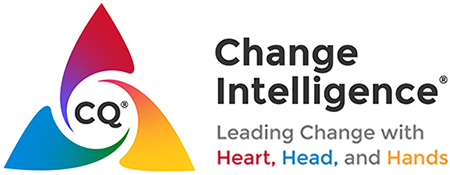We all tend to fit one of seven types of change leader, each of which indicates a different mix of leading with Head, Heart, or Hands. The fifth change leader type is the Driver, who’s strong in both Head and Hands.
Change leaders who are Drivers are all about results—they hunger to achieve the objectives of the change initiative. They are focused on both the short-term and long-term aspects of the change, and they will do whatever it takes to complete the immediate task and move toward the ultimate goal. They pitch in, share their expertise, and work long and hard toward objectives. But while they focus on the strategic and tactical business issues, Drivers may not give sufficient attention to the people aspects of the change process. They may be so focused on the work that they fail to raise important questions about the impact of the change on organizational culture, team dynamics, or individual people.
More than any other style, the Driver wants results. If you’re a Driver, you value and place a high degree of time and attention on getting the job done, simultaneously focusing on the strategic change goal as well as on the tactical plans necessary to accomplish objectives along the way. You excel at being forceful, pragmatic, and analytical.
It will come as no surprise to most Drivers that they don’t always pay sufficient attention to the people side of change. You will significantly increase your ability to lead lasting, meaningful, truly impactful change by engaging more with a wide variety of stakeholders, crafting messages that connect with affected groups, and attempting to understand and alleviate people’s concerns during the change process. Incorporating more genuine warmth and interest in others will help you emerge not just as a strong leader but as a caring mentor as well.
As a driver, your style of leadership is effective because you usually:
- Have a keen grasp of strategy and execution
- Know where you want to go and how you need to get there, and are able to focus on both the what and the how of change
- Are tireless in pursuit of goals
- Balance dealing with current state while putting systems and processes in place to move the organization toward the future
- Are not afraid to face brutal facts and confront harsh realities
However, your acute focus on strategy and execution means you often overlook the people involved. Some of your leadership faults result because you sometimes:
- May not give sufficient attention to the cultural components of change
- May not appear to focus adequately on people’s individual needs or on team dynamics
- Complain about lack of progress toward goals and the less-than-optimal efforts of others
- Do not give sufficient attention to the process by which goals are reached
- Can seem less interested in obtaining buy-in from others, incorporating their opinions into solutions and strategies, or engaging in two-way dialogue with them.
Although you’re sometimes seen as a stubborn and overly direct poor listener, others also admire you for being pragmatic, focused, and confident. When you have a full understanding of these facets of your leadership style, you can go about maximizing the good and minimizing the weak spots.
